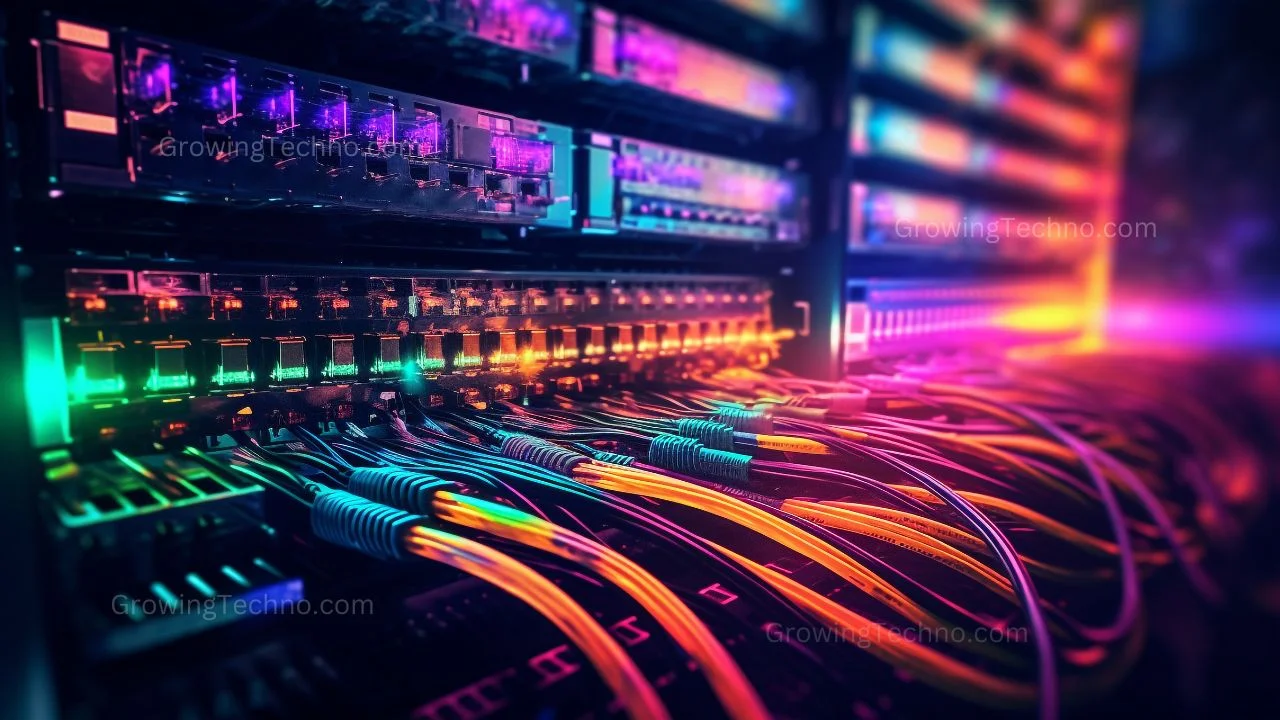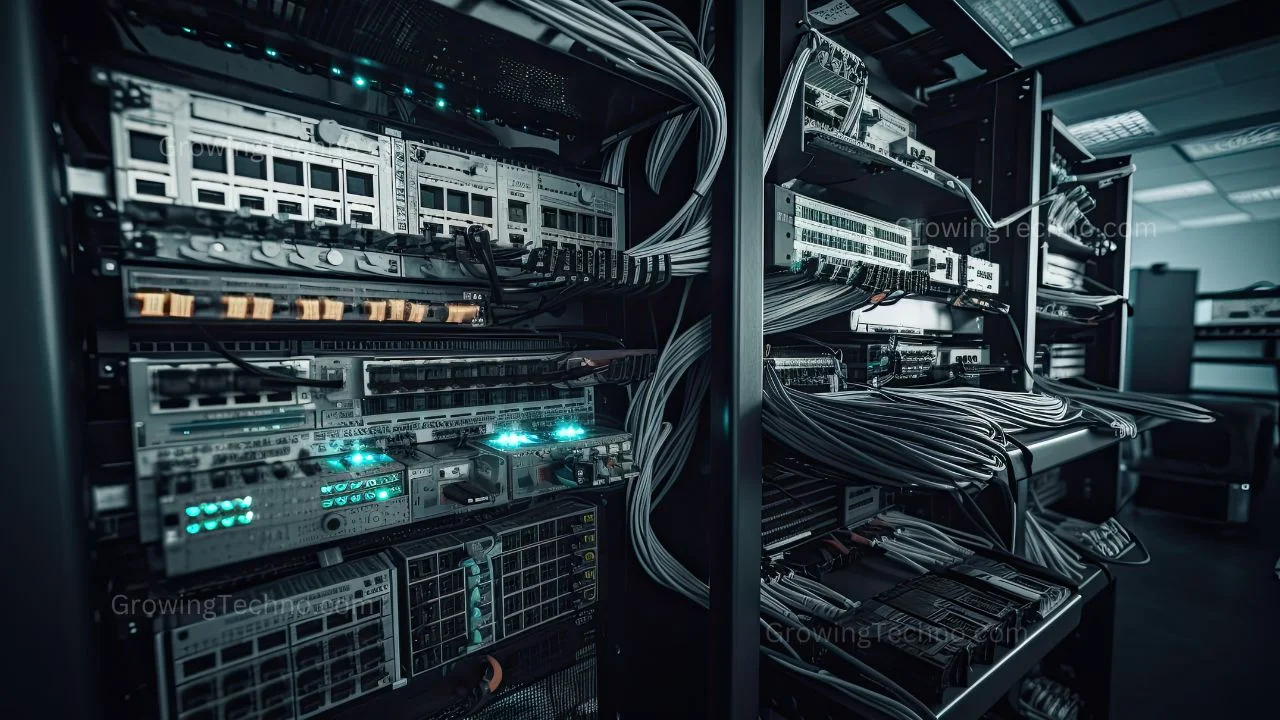
In the realm of the digital age, computer networks serve as the indispensable infrastructure that underpins our interconnected world. These networks facilitate communication between devices, grant us access to the internet, and enable a multitude of online services we rely on daily. As technology rapidly advances, so does the complexity of computer networks, necessitating intelligent solutions to effectively manage and optimize their performance. This is where Artificial Intelligence (AI) and Machine Learning (ML) come into play. In this extensive exploration, we will delve into the myths and facts surrounding AI and ML in computer networks, uncover the exciting possibilities they hold for the future, and ultimately, discern their true potential.
AI/ML in Computer NetworksDispelling the Myths
Myth #1: AI and ML Can Replace Network Administrators
Fact: AI/ML Augment, Not Replace, Network Administrators
One prevailing myth suggests that AI and ML have the potential to entirely replace human network administrators. While these technologies indeed possess the capability to automate tasks and optimize network performance, they cannot supplant the need for human expertise. Network administrators serve as critical decision-makers, adept troubleshooters, and guardians of network alignment with organizational goals.
AI and ML function as invaluable tools that assist network administrators in various capacities:
- Predictive Analytics: Leveraging historical network data, AI/ML can forecast potential issues and recommend proactive measures, empowering administrators to address problems before they manifest.
- Automation: These technologies excel in automating routine tasks such as device provisioning, network monitoring, and security updates, allowing administrators to concentrate on mission-critical responsibilities.
- Anomaly Detection: AI/ML is proficient at recognizing atypical network behavior, signaling potential security threats or performance bottlenecks, and prompting administrators for further investigation.
- Optimization: They continually fine-tune network resources and configurations to ensure efficient data transmission, minimizing downtime and performance degradation.
Myth #2: AI and ML Guarantee Network Security
Fact: AI/ML Enhance Network Security but Require Human Oversight
Another prevalent misconception is that AI and ML alone can guarantee network security. While they undeniably play a pivotal role in identifying and mitigating threats, they are not infallible and necessitate human oversight.
The contributions of AI and ML to network security encompass:
- Threat Detection: AI/ML diligently analyzes network traffic patterns to detect unusual or suspicious activities, such as Distributed Denial of Service (DDoS) attacks or malware infiltration.
- Real-time Response: These technologies can react autonomously to known threats by isolating affected devices, blocking malicious traffic, or applying security patches.
- Behavioral Analysis: AI/ML proficiently assesses user and device behavior, identifying anomalies that might indicate a security breach.
- Vulnerability Management: They help prioritize security vulnerabilities, evaluating their potential impact and providing recommendations for remediation.
Nevertheless, AI/ML does have limitations. They may struggle to detect new, evolving threats that haven’t been previously identified. Hence, human expertise remains essential for:
- Policy and Strategy: Human experts must define and periodically update network security policies and strategies, aligning them with the specific needs and objectives of the organization.
- Incident Response: In the event of a security breach, human analysts are crucial for investigating the extent and source of the breach and implementing appropriate remedial actions.
- Adaptive Learning: Continual learning and adaptation of security measures necessitate human involvement to stay ahead of emerging threats.
Myth #3: AI and ML Make Networks Impervious to Downtime
Fact: AI/ML Reduce Downtime but Cannot Eliminate It Entirely
AI and ML indeed contribute significantly to the reduction of network downtime by predicting and mitigating potential issues. However, they cannot entirely eradicate downtime, as unforeseen events can still disrupt network operations.
The roles of AI and ML in minimizing downtime encompass:
- Predictive Maintenance: These technologies can predict when network components, such as routers or switches, are likely to fail based on historical data. Network administrators can then schedule maintenance to replace or repair these components before they fail.
- Load Balancing: AI/ML dynamically distributes network traffic, preventing the overloading of specific servers or connections, which in turn reduces the risk of service interruptions.
- Fault Tolerance: They promptly detect network faults, such as link failures, and reroute traffic to backup paths, ensuring uninterrupted service.
- Performance Optimization: AI/ML continuously optimizes network configurations to ensure efficient data transmission, minimizing downtime caused by congestion or inefficiencies.
While AI and ML greatly enhance network reliability, network administrators must still plan for contingencies and have disaster recovery procedures in place to address unexpected disruptions.
The Future of AI/ML in Computer Networks
As we look to the future, the convergence of AI and ML with computer networks opens up a realm of exciting possibilities:
1. 5G Network Optimization: AI/ML will play a pivotal role in optimizing 5G networks to deliver ultra-low latency and high-speed connectivity, enabling transformative technologies like autonomous vehicles and augmented reality.
2. Network Slicing: AI/ML-driven network slicing will empower network operators to dynamically allocate resources to meet specific application requirements, whether in smart cities, industrial automation, or healthcare.
3. Self-healing Networks: Networks will become increasingly self-sufficient, with AI/ML autonomously identifying and resolving issues, reducing the need for human intervention and enhancing reliability.
4. Enhanced Security: AI/ML will evolve to detect zero-day attacks and advance persistent threats more effectively, fortifying network security.
5. Edge Computing: Edge devices will harness AI/ML for real-time data analysis and decision-making, reducing the need for data transmission to centralized servers and bolstering efficiency.
Harnessing AI/ML for Computer Network Optimization
Let us explore how AI and ML are harnessed for network optimization, focusing on key areas such as performance enhancement, resource allocation, and predictive maintenance.
1. Performance Enhancement:
AI and ML are pivotal in enhancing network performance by continuously monitoring and fine-tuning various network parameters. These technologies analyze network traffic, latency, and error rates in real-time to identify bottlenecks and inefficiencies. Here’s how they contribute to performance optimization:
- Dynamic Routing: AI algorithms adjust network routes in response to changing traffic patterns, ensuring that data takes the most efficient path to its destination.
- Traffic Shaping: ML models can classify different types of network traffic and prioritize critical applications, such as VoIP or video conferencing, to guarantee optimal performance.
- Quality of Service (QoS): AI-driven QoS mechanisms allocate network resources based on application requirements, preventing congestion and ensuring a consistent user experience.
2. Resource Allocation:
Efficient resource allocation is essential for maximizing network utilization while minimizing costs. AI and ML algorithms excel in resource allocation by analyzing historical data and predicting future demands. Here’s how they optimize resource allocation:
- Bandwidth Allocation: AI/ML models forecast peak usage times and allocate additional bandwidth as needed to accommodate surges in network traffic.
- Server Load Balancing: ML-driven load balancers distribute incoming requests evenly across servers, preventing server overload and optimizing response times.
- Cloud Resource Management: AI-based cloud management platforms allocate virtual resources dynamically, scaling resources up or down based on workload requirements and cost considerations.
3. Predictive Maintenance:
One of the most significant advantages of AI and ML in network optimization is predictive maintenance. These technologies can predict potential failures in network hardware and proactively schedule maintenance, reducing downtime. Key aspects of predictive maintenance include:
- Anomaly Detection: AI/ML algorithms analyze network device data to identify deviations from typical behavior, indicating potential hardware or software issues.
- Component Lifespan Prediction: By assessing the operational history of network components, AI models can estimate the remaining lifespan of devices like routers, switches, and storage systems.
- Maintenance Scheduling: Predictive maintenance systems generate maintenance schedules, including firmware updates and hardware replacements, to prevent unexpected failures.

Overcoming Challenges and Concerns
While AI and ML offer immense potential for network optimization, they also pose certain challenges and concerns that organizations must address. Let us explore these challenges and provide insights into mitigating associated risks.
1. Data Privacy and Security:
AI/ML algorithms require access to vast amounts of network data for training and analysis. This raises concerns about data privacy and security. To address these issues, organizations can implement the following measures:
- Data Encryption: Encrypt sensitive network data to protect it from unauthorized access during transmission and storage.
- Access Controls: Implement strict access controls to limit who can view and manipulate network data, ensuring that only authorized personnel have access.
- Anonymization: Remove personally identifiable information (PII) from network data before using it for AI/ML training.
2. Training Data Quality:
The accuracy and reliability of AI/ML models heavily depend on the quality of the training data. Noisy or biased data can lead to inaccurate predictions and suboptimal network optimization. To mitigate this challenge, organizations should:
- Data Validation: Continuously validate and clean training data to eliminate inconsistencies and errors.
- Bias Detection: Regularly assess models for bias and take corrective actions to ensure fairness and impartiality.
3. Integration Complexity:
Integrating AI and ML solutions into existing network infrastructure can be complex. Organizations may face challenges in compatibility, scalability, and resource allocation. To simplify integration:
- Select Scalable Solutions: Choose AI/ML platforms that can seamlessly scale with the growing demands of your network.
- Collaborative Planning: Collaborate with network administrators and AI/ML experts to develop a comprehensive integration plan.
AI/ML and the Evolving Network Ecosystem
The network ecosystem is continually evolving, driven by emerging technologies and shifting user demands. Let us explore how AI and ML adapt to and shape this evolving landscape.
1. Edge Computing:
Edge computing, which involves processing data closer to the source (e.g., IoT devices), is on the rise. AI/ML algorithms are increasingly deployed at the network edge to enable real-time decision-making. This reduces latency and bandwidth usage, making edge computing a critical component of the future network ecosystem.
2. Network Virtualization:
AI/ML plays a crucial role in network virtualization, where network functions are decoupled from physical hardware. These technologies optimize resource allocation in virtualized environments, ensuring efficient operation and cost savings.
3. Security Threats and AI/ML:
As cyber threats become more sophisticated, AI and ML are evolving to combat them. AI-driven security systems can detect and respond to advanced threats in real time, making them indispensable in the battle against cyberattacks.
4. The Future of Network Management:
AI and ML are poised to redefine network management. Autonomous networks, guided by AI algorithms, will self-optimize, self-heal, and adapt to changing conditions. Network administrators will transition from routine tasks to overseeing AI-driven systems, focusing on strategic planning and decision-making.
The Human-AI Collaboration
While AI and ML offer automation and optimization capabilities, human expertise remains irreplaceable. Let us explore the symbiotic relationship between humans and AI in network management.

1. Skill Augmentation:
AI/ML augments the skills of network administrators by providing real-time insights, automating routine tasks, and predicting network issues. This allows administrators to focus on high-level decision-making and strategic planning.
2. Continuous Learning:
Network administrators must adapt to the evolving landscape of AI/ML in network management. Continuous learning and upskilling are essential to harness the full potential of these technologies.
3. Ethical Considerations:
As AI/ML systems gain more autonomy in network management, ethical considerations become paramount. Organizations must establish guidelines and principles for responsible AI usage, including transparency, accountability, and fairness.
The Future of AI/ML in Computer Networks
Finally, we will look ahead to the future of AI/ML in computer networks and the transformative impact these technologies will have on the digital world.
1. Quantum Computing and AI:
The convergence of quantum computing and AI promises to solve complex problems beyond the capabilities of classical computers. AI algorithms will leverage quantum computing’s computational power to revolutionize network optimization, cryptography, and more.
2. AI-Powered Autonomous Networks:
The era of fully autonomous networks is on the horizon. These networks will continuously self-optimize, self-heal, and adapt, ushering in a new era of network efficiency and reliability.
3. AI in Every Network Component:
AI/ML will be embedded in every network component, from routers and switches to IoT devices. This pervasive AI integration will create a seamless and intelligent network ecosystem.
4. Ethical AI Development:
The development of AI in computer networks will be guided by ethical considerations, ensuring that these technologies benefit humanity while upholding principles of fairness, transparency, and accountability.
Conclusion
As we conclude this exploration of AI and ML in computer networks, it’s evident that these technologies are reshaping the landscape of network management. The future promises networks that are more efficient, secure, and adaptive than ever before. However, this transformation also presents challenges, requiring organizations to navigate the complexities of data privacy, integration, and ethical AI usage.
In this evolving digital era, the synergy between human expertise and artificial intelligence will be pivotal. Network administrators must embrace continuous learning and adapt to their roles as overseers of AI-driven systems.
Ultimately, AI and ML are catalysts for innovation and efficiency, propelling computer networks into a future where connectivity is seamless, security is robust, and possibilities are limitless.








